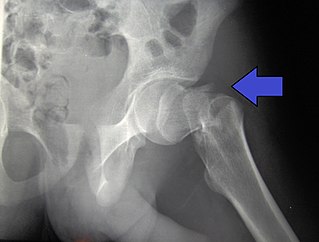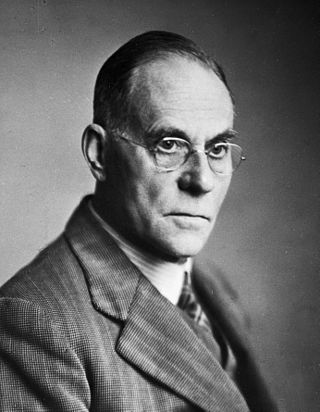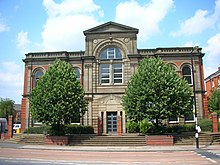
Plastic surgery is a surgical specialty involving the restoration, reconstruction or alteration of the human body. It can be divided into two main categories: reconstructive surgery and cosmetic surgery. Reconstructive surgery includes craniofacial surgery, hand surgery, microsurgery, and the treatment of burns. While reconstructive surgery aims to reconstruct a part of the body or improve its functioning, cosmetic surgery aims at improving the appearance of it.

Surgery is a medical specialty that uses manual and/or instrumental techniques to physically reach into a subject's body in order to investigate or treat pathological conditions such as a disease or injury, to alter bodily functions, to improve appearance, or to remove/replace unwanted tissues or foreign bodies. The subject receiving the surgery is typically a person, but can also be a non-human animal.

Blood transfusion is the process of transferring blood products into a person's circulation intravenously. Transfusions are used for various medical conditions to replace lost components of the blood. Early transfusions used whole blood, but modern medical practice commonly uses only components of the blood, such as red blood cells, white blood cells, plasma, platelets, and other clotting factors.
A trauma center, or trauma centre, is a hospital equipped and staffed to provide care for patients suffering from major traumatic injuries such as falls, motor vehicle collisions, or gunshot wounds. A trauma center may also refer to an emergency department without the presence of specialized services to care for victims of major trauma.

Orthopedic surgery or orthopedics is the branch of surgery concerned with conditions involving the musculoskeletal system. Orthopedic surgeons use both surgical and nonsurgical means to treat musculoskeletal trauma, spine diseases, sports injuries, degenerative diseases, infections, tumors, and congenital disorders.

Internal bleeding is a loss of blood from a blood vessel that collects inside the body. Internal bleeding is usually not visible from the outside. It is a serious medical emergency but the extent of severity depends on bleeding rate and location of the bleeding. Severe internal bleeding into the chest, abdomen, retroperitoneal space, pelvis, and thighs can cause hemorrhagic shock or death if proper medical treatment is not received quickly. Internal bleeding is a medical emergency and should be treated immediately by medical professionals.

A spinal cord injury (SCI) is damage to the spinal cord that causes temporary or permanent changes in its function. Symptoms may include loss of muscle function, sensation, or autonomic function in the parts of the body served by the spinal cord below the level of the injury. Injury can occur at any level of the spinal cord and can be complete, with a total loss of sensation and muscle function at lower sacral segments, or incomplete, meaning some nervous signals are able to travel past the injured area of the cord up to the Sacral S4-5 spinal cord segments. Depending on the location and severity of damage, the symptoms vary, from numbness to paralysis, including bowel or bladder incontinence. Long term outcomes also range widely, from full recovery to permanent tetraplegia or paraplegia. Complications can include muscle atrophy, loss of voluntary motor control, spasticity, pressure sores, infections, and breathing problems.

A hip fracture is a break that occurs in the upper part of the femur, at the femoral neck or (rarely) the femoral head. Symptoms may include pain around the hip, particularly with movement, and shortening of the leg. Usually the person cannot walk.

Spinal fusion, also called spondylodesis or spondylosyndesis, is a neurosurgical or orthopedic surgical technique that joins two or more vertebrae. This procedure can be performed at any level in the spine and prevents any movement between the fused vertebrae. There are many types of spinal fusion and each technique involves using bone grafting—either from the patient (autograft), donor (allograft), or artificial bone substitutes—to help the bones heal together. Additional hardware is often used to hold the bones in place while the graft fuses the two vertebrae together. The placement of hardware can be guided by fluoroscopy, navigation systems, or robotics.

Fat embolism syndrome occurs when fat enters the blood stream and results in symptoms. Symptoms generally begin within a day. This may include a petechial rash, decreased level of consciousness, and shortness of breath. Other symptoms may include fever and decreased urine output. The risk of death is about 10%.

A tourniquet is a device that is used to apply pressure to a limb or extremity in order to stop the flow of blood. It may be used in emergencies, in surgery, or in post-operative rehabilitation.
Edward Joseph Lister Lowbury was a pioneering and innovative English medical bacteriologist and pathologist, and also a published poet.

Leonard Colebrook FRS was an English physician and bacteriologist.

Facial trauma, also called maxillofacial trauma, is any physical trauma to the face. Facial trauma can involve soft tissue injuries such as burns, lacerations and bruises, or fractures of the facial bones such as nasal fractures and fractures of the jaw, as well as trauma such as eye injuries. Symptoms are specific to the type of injury; for example, fractures may involve pain, swelling, loss of function, or changes in the shape of facial structures.
A hospital-acquired condition (HAC) is an undesirable situation or condition that affects a patient and that arose during a stay in a hospital or medical facility. It is a designation used by Medicare/Medicaid in the US for determining MS-DRG reimbursement beginning with version 26. Not only hospital-acquired infections but also any other situation or condition, such as pressure ulcers, blood type mismatch, or iatrogenic injury, can be a HAC.
St. Francis Hospital is a general medical and surgical hospital located in Columbus, Georgia, United States, and is accredited by the Joint Commission.

Sir Robert Jones, 1st Baronet, was a Welsh orthopaedic surgeon who helped to establish the modern specialty of orthopaedic surgery in Britain.

A femoral fracture is a bone fracture that involves the femur. They are typically sustained in high-impact trauma, such as car crashes, due to the large amount of force needed to break the bone. Fractures of the diaphysis, or middle of the femur, are managed differently from those at the head, neck, and trochanter; those are conventionally called hip fractures. Thus, mentions of femoral fracture in medicine usually refer implicitly to femoral fractures at the shaft or distally.

The Töölö Hospital is a hospital in Taka-Töölö, Helsinki, Finland, belonging to the Helsinki University Central Hospital. It has special departments for plastic surgery, orthopedic surgery and traumatology, hand surgery and neurosurgery. The hospital has a 24-hour policlinic receiving trauma patients from the Helsinki capital area and occasionally from the entire region of Southern Finland. Patients usually arrive at the policlinic on a medical note. The policlinic treats about 18 thousand patients per year. The hospital also hosts the cleft lip and cleft palate centre HUSUKE, containing research and care for cleft lips and cleft palates as well as the department for care of mouth and jaw diseases. The Töölö Hospital also has its own X-ray facility and laboratory.
Curtis P. Artz (1915–1977) was an American trauma surgeon and burn care specialist. He served in the U.S. Army working in surgical research, founded and led several organizations dedicated to surgery and burn care, published medical textbooks and academic articles, and taught as a Professor of Surgery at multiple colleges and universities throughout the U.S.


















